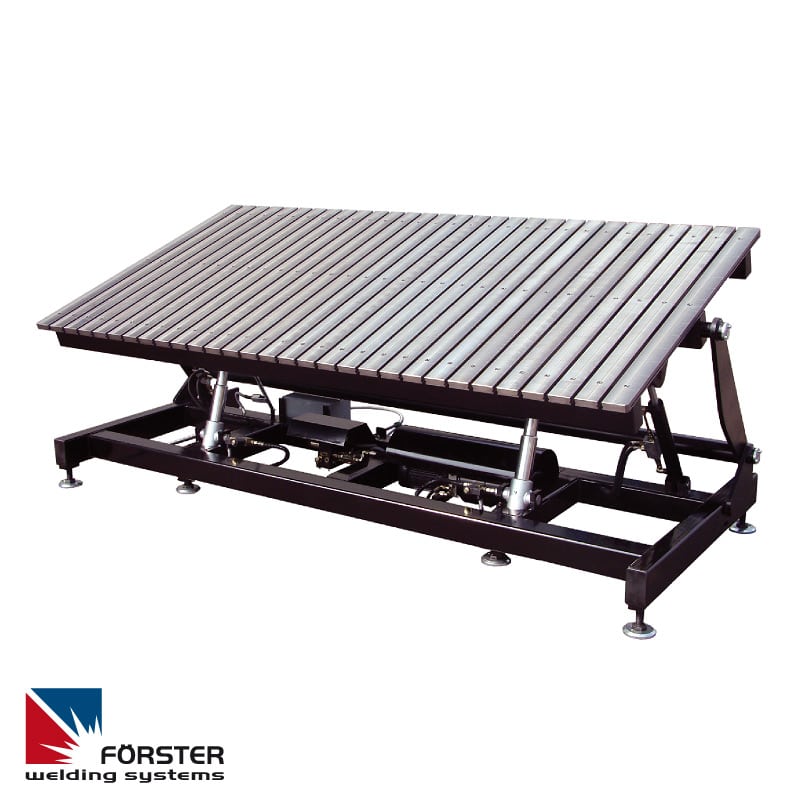Whether you are a professional welder or someone who does welding projects as a hobby, why would you use a welding table that swivels and tilts rather than a traditional table that has a solid, horizontal surface?
If you can’t think of a suitable answer, think of the difference between a hard wooden chair and an ergonomic office chair that can be adjusted up, down, backward, and forwards.
The wooden chair might work if you sit nice and straight and don’t mind your bottom getting sore. The ergonomic office chair though is likely to help you sit correctly and also feel comfortable. The problem is that if the chair causes you to bend, stoop, or take up positions that impact on your spine you’re likely to be in trouble. At best this bad posture will cause discomfort, at worst it could cause skeletal injury. This might sound like over-kill, but it isn’t. The vast majority of people do not realize the impact of poor posture.
If a welding table can swivel and tilt, it stands to reason that it will make it a lot easier for the person welding to get to joints whether they are above or under the work piece. Instead of the welder having to bend awkwardly to get to inaccessible points, all he does is move the table to suit his needs. The added advantage is that it also prevents unnecessary downtime:
- Because the welder can work more efficiently and therefore is less likely to have to re-measure, make corrections, and mechanically rework the materials to get the job right.
- Bad posture can cause serious health issues that inevitably lead to absenteeism. This can impact on both the timeframe of a job as well as costs as other workers may need to be called in to complete the job for the absent employee.
Welding Tables

Traditional welding tables are flat and made of mild steel. Nowadays welding tables are still made from mild steel, but more specialized designs are made from cast iron, stainless steel, and from various alloys. You don’t have to compromise; you can choose exactly the surface that is best for the work you are welding.
Similarly, welding tables are traditionally just tables with four legs and an upper surface that is both horizontal and level. Jobs are done in parts, and a wide variety of clamps are used to keep the metal in place while the welding operation is in progress.
In recent years, welding tables have taken a totally new design turn with modular tables enabling work to be done much more quickly and efficiently. The most exciting element of these tables is that they can be adjusted to any position for precision welding that requires 100 percent accuracy of all measurements, angles, and alignment of parts. Additionally, all you need are a few standard components made for use with the tale and you can create a custom solution for any welding job you could imagine. These include lift tables, vertical turntables, and horizontal rotary tables.
Modular 3D Welding Tables
Modular 3D welding tables from Forster America are designed to enable welders to achieve custom solutions for any welding jobs. Instead of solid upper surfaces, their tables feature rails that can be adjusted to accommodate jigs and other fixtures. Made from gray, non-ferric cast iron or an aluminum copper alloy, the rails may be spaced up to 100 mm apart. Furthermore, each rail is able to withstand a maximum load of 1.5 tons if cast iron and 1 ton if made from the alloy. The most common width of Forster’s modular tables is 47 inches and the available length ranges from 39 inches to 118 inches. The largest table measures 118 inches x 59 inches.
Welding Tables That Swivel
The company’s swiveling welding tables are operated by electric motors and have a swivel range of 360 degrees. Like the 3D tables described above, they have slatted surfaces to accommodate jigs and other specialized welding tools. They also incorporate a valuable lifting function.
The prime feature of the Forster swivel welding tables enables the adjustment of axis using the center-of-gravity. A patented feature, because of gravitational force it enables the torque to be set to zero even when the welding is working with heavy parts that weigh up to one ton. The table is then secured in position simply and easily using a locking brake.
Welding Tables That Lift and Tilt
Designed to make the welding operation more efficient and productive, Forster’s lifting and tilting welding tables may be adjusted hydraulically to any height and degree. There are several different types that have been designed for different needs depending on whether it needs to lift and turn, lift and rotate, lift and tilt, or just lift.
Convinced that you should be using a welding table that swivels and tilts? Contact the friendly professionals at Forster America for more information.

